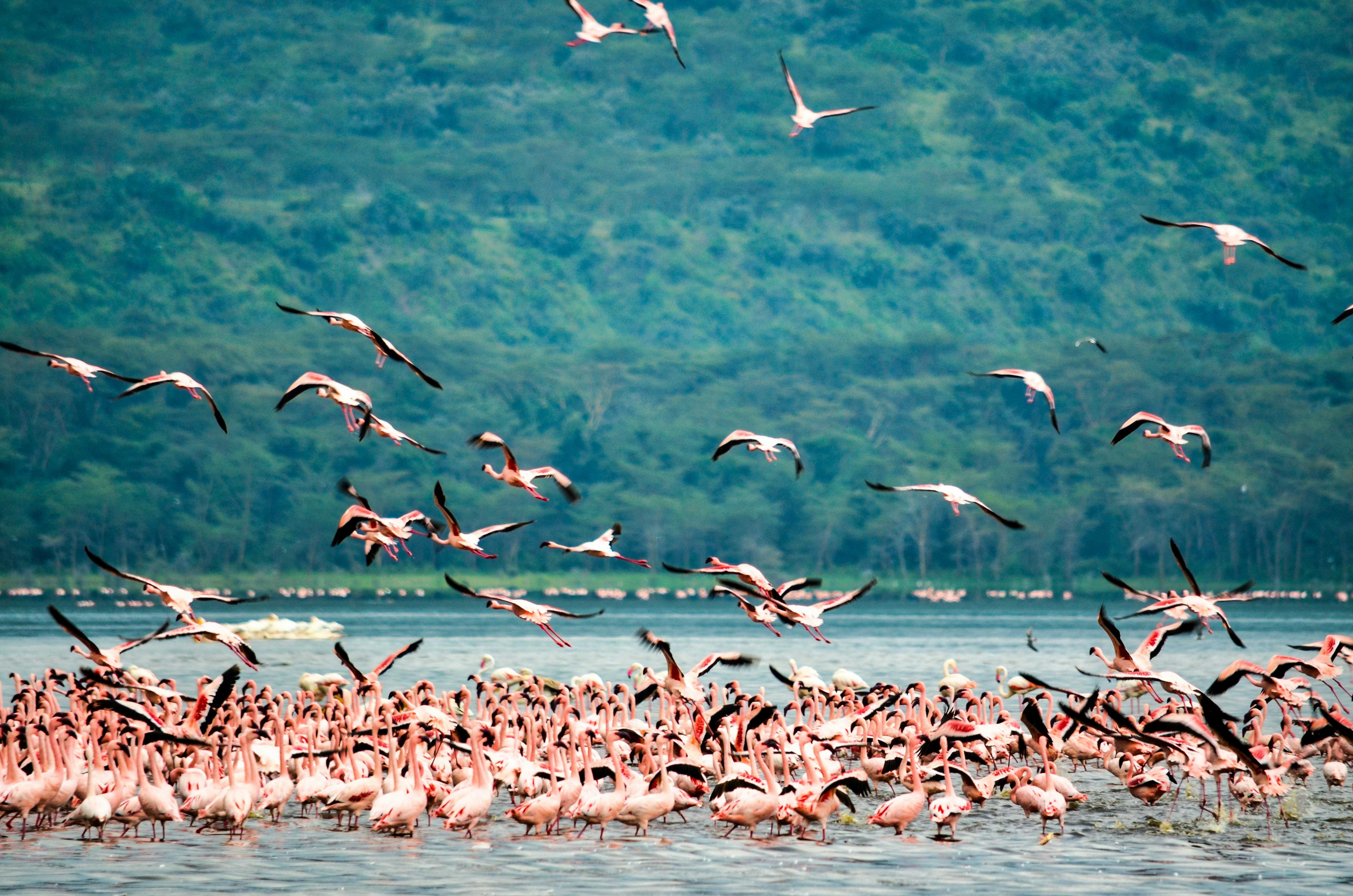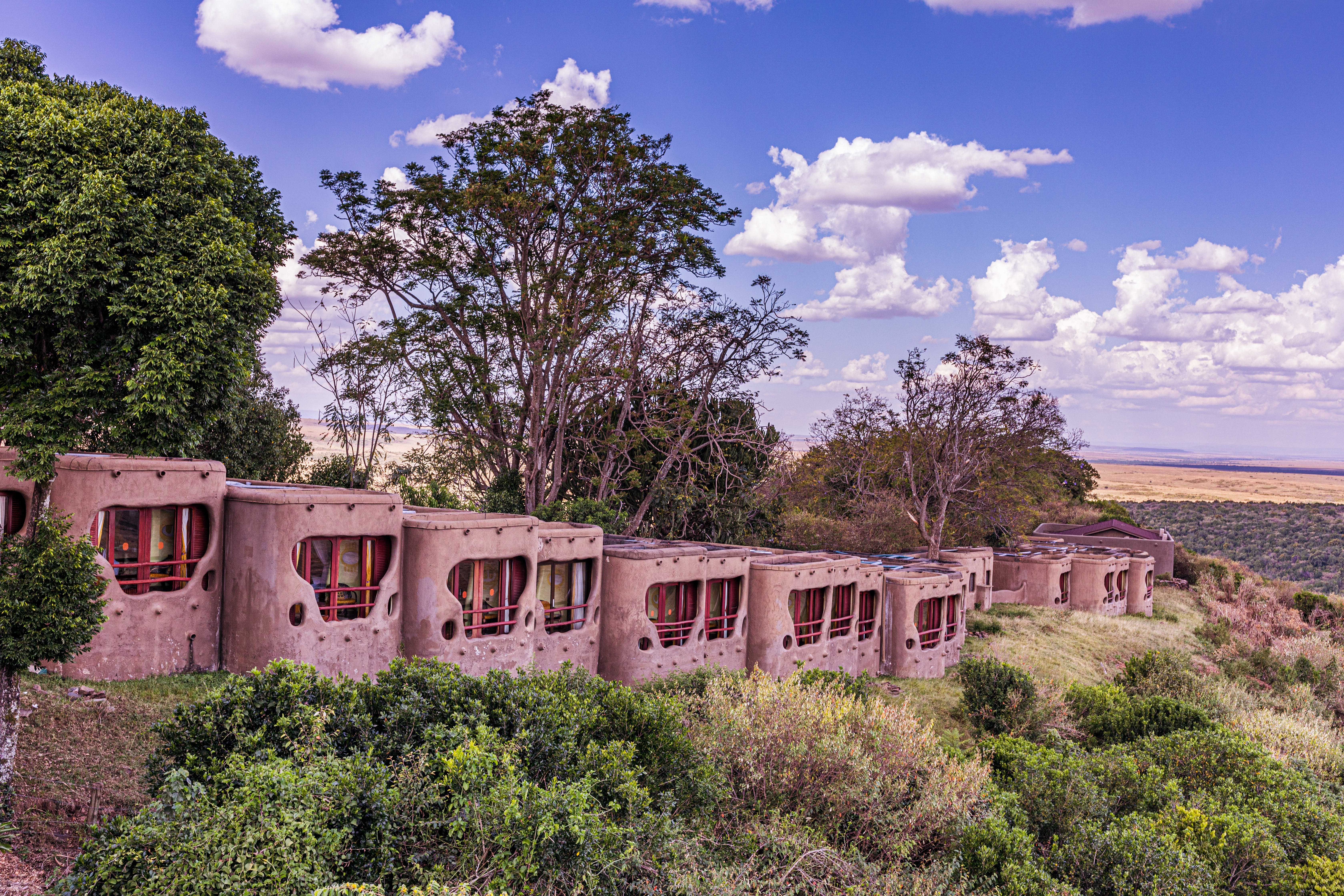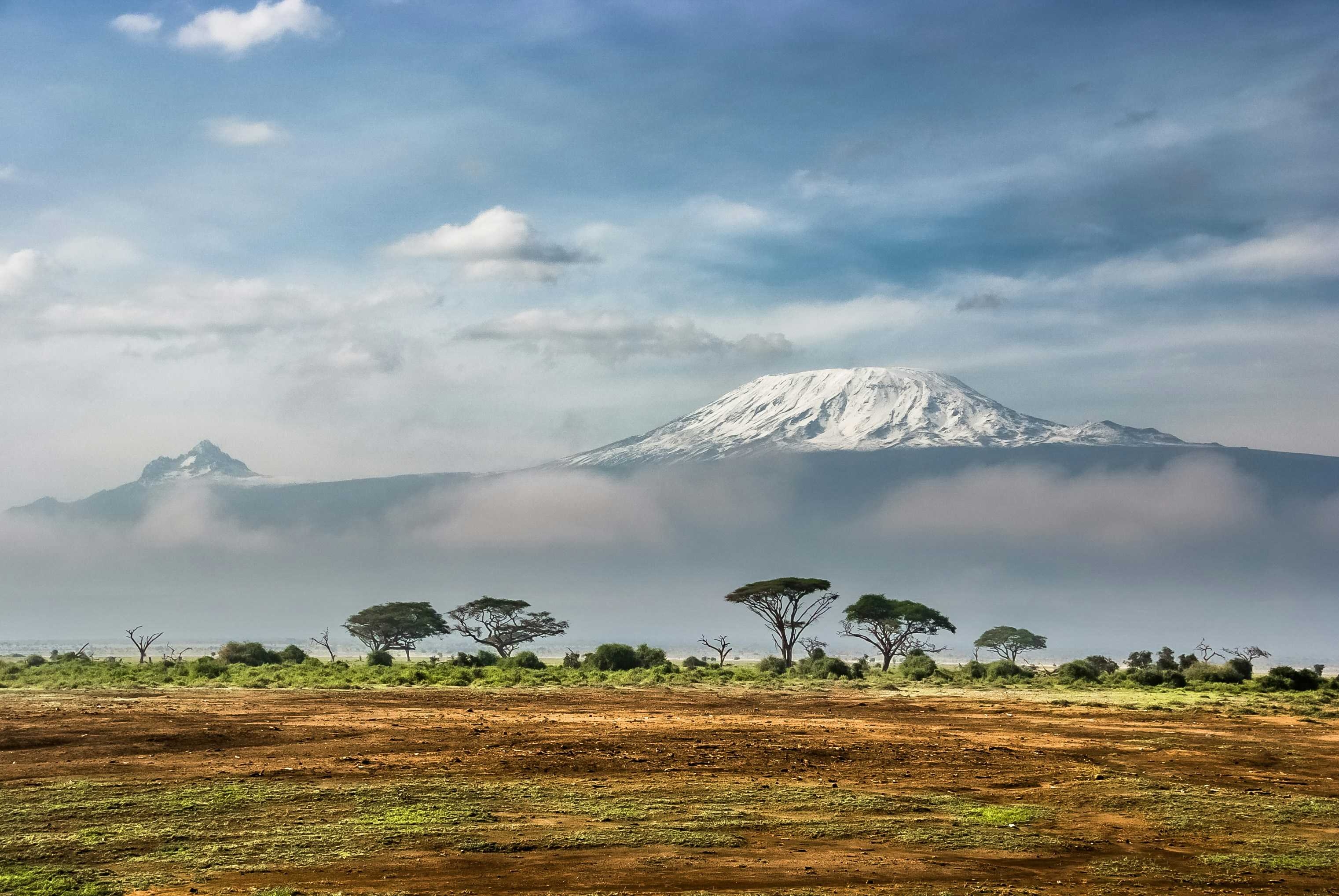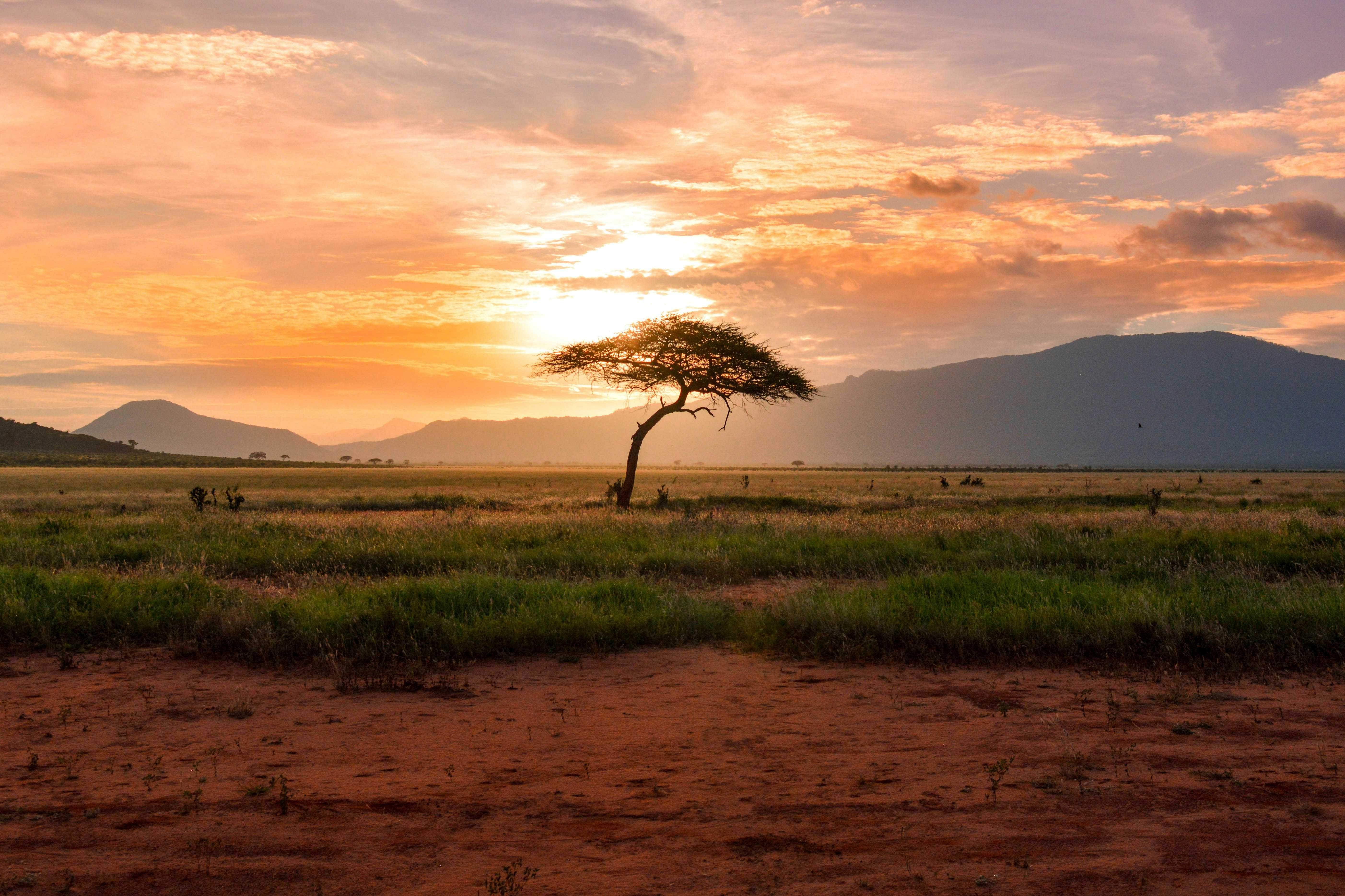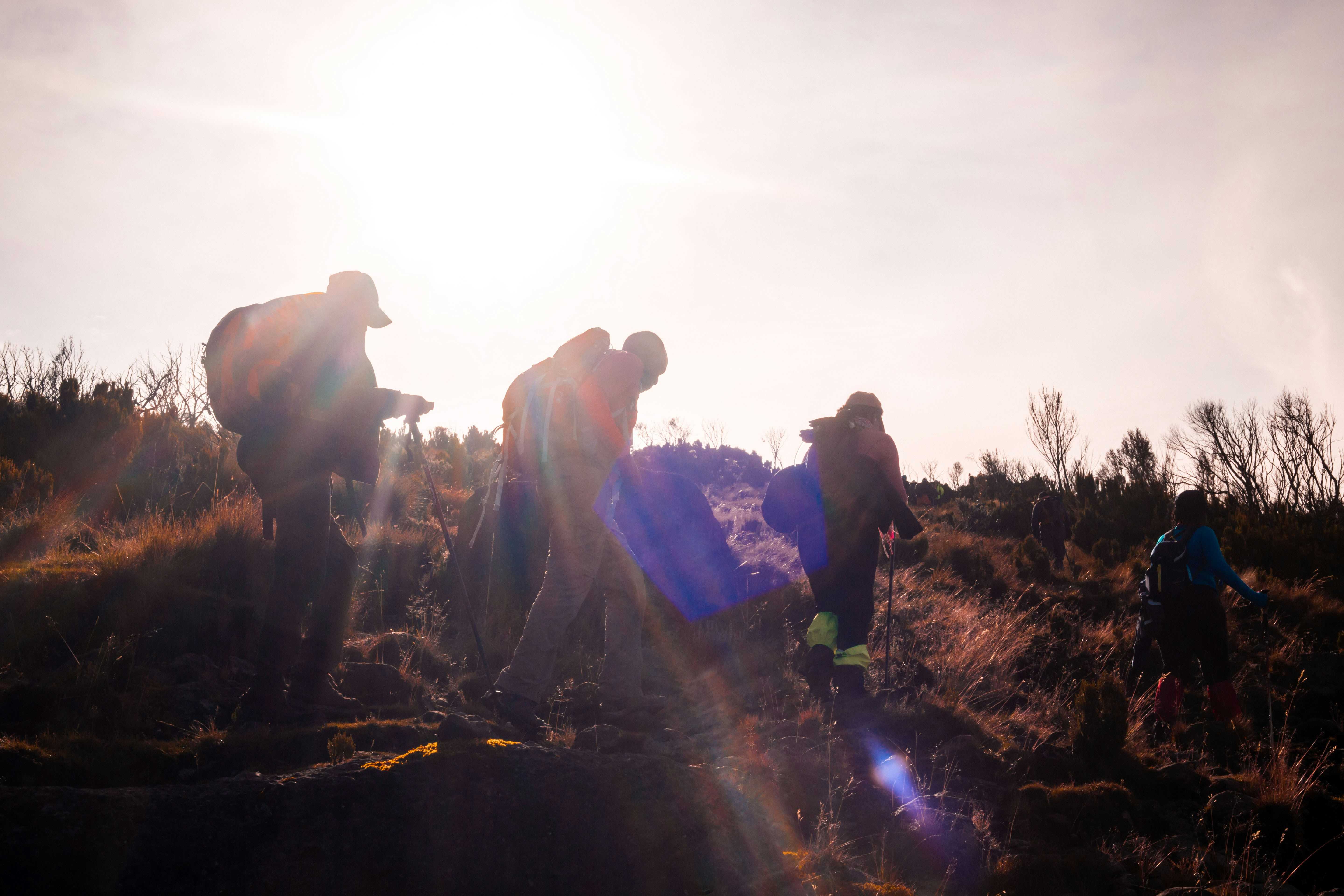Kenya is a country renowned for its stunning landscapes, diverse wildlife, and vibrant cultures. As travelers, it is our responsibility to ensure that we leave a positive impact on the destinations we visit. Sustainable travel in Kenya focuses on minimizing the negative effects of tourism while maximizing the benefits for local communities and wildlife. At the heart of sustainable travel in Kenya are conservation initiatives, which play a vital role in preserving the country's natural heritage.
Conservation Initiatives in Kenya
Conservation initiatives in Kenya are crucial for the protection of the country's rich biodiversity. With over 25 national parks and reserves, including the famous Maasai Mara and Amboseli National Park, Kenya is home to a wide variety of wildlife species, some of which are endangered. These initiatives aim to safeguard the habitats and ecosystems that support these unique and vulnerable species.
Moreover, conservation initiatives in Kenya contribute to the preservation of cultural heritage. Many indigenous communities in Kenya have a deep connection with the land and wildlife. By supporting community-based conservation projects, travelers can help empower local communities to protect their traditional ways of life while conserving the environment.
Conservation initiatives also provide economic benefits for local communities. Sustainable tourism practices, such as ecotourism, generate income and employment opportunities for communities living near wildlife sanctuaries and conservation areas. This helps to alleviate poverty and reduce reliance on unsustainable practices like poaching and deforestation.
Sustainable travel in Kenya goes hand in hand with conservation initiatives. By supporting wildlife sanctuaries, community-based conservation projects, and engaging in responsible travel practices, travelers can contribute to the preservation of Kenya's natural and cultural heritage. Together, we can ensure that future generations have the opportunity to experience the beauty and wonder of this incredible country. Let us all embrace sustainable travel and make a positive impact on Kenya's conservation efforts.
Wildlife Sanctuaries
Kenya, known for its rich biodiversity and stunning landscapes, is home to numerous wildlife sanctuaries that play a vital role in conservation efforts. These sanctuaries serve as havens for endangered species and contribute to the preservation of Kenya's unique natural heritage. Let's delve into some of the most notable wildlife sanctuaries in Kenya and explore their significant role in conservation.
Maasai Mara National Reserve
One of Kenya's most famous wildlife sanctuaries is the Maasai Mara National Reserve. Located in southwestern Kenya, this vast expanse of savannah is renowned for its annual wildebeest migration, where millions of wildebeest, zebras, and other herbivores make their way across the Mara River. The Maasai Mara not only provides a spectacular wildlife viewing experience for tourists but also serves as an important conservation area for a diverse range of species.
Amboseli National Park
Situated at the foothills of Mount Kilimanjaro, Amboseli National Park is another remarkable wildlife sanctuary in Kenya. This park is known for its large herds of elephants, which roam freely against the backdrop of Africa's highest peak. Amboseli's unique ecosystem supports a variety of wildlife, including lions, cheetahs, giraffes, and numerous bird species. Through its conservation efforts, Amboseli National Park aims to protect these animals and their habitats for future generations.
Tsavo National Parks
Encompassing an area larger than some countries, Tsavo National Park is divided into two sections, Tsavo East and Tsavo West. These parks are home to a diverse range of wildlife, including elephants, lions, rhinos, and buffalos. Tsavo's expansive landscapes offer visitors a chance to witness the beauty of Kenya's wilderness while supporting conservation initiatives aimed at preserving the park's biodiversity.
Lewa Wildlife Conservancy
Lewa Wildlife Conservancy, located in northern Kenya, is a prime example of community-led conservation. This sanctuary is a protected area for endangered species such as rhinos, Grevy's zebras, and reticulated giraffes. The conservancy also actively engages with local communities, providing education and healthcare services, and promoting sustainable livelihoods. By involving the local population in conservation efforts, Lewa Wildlife Conservancy ensures the long-term protection of Kenya's wildlife and natural resources.
Ol Pejeta Conservancy
Ol Pejeta Conservancy, situated in central Kenya, is not only a wildlife sanctuary but also a pioneer in innovative conservation practices. This conservancy is home to the last two northern white rhinos in the world and is actively involved in rhino conservation efforts. Ol Pejeta also implements community-based conservation initiatives, focusing on sustainable agriculture and wildlife tourism. Through these initiatives, Ol Pejeta Conservancy demonstrates the positive impact that conservation can have on local communities and the environment.
By exploring these wildlife sanctuaries, travelers can not only witness Kenya's incredible wildlife but also contribute to their conservation. These sanctuaries serve as important refuges for endangered species and play a crucial role in protecting Kenya's natural heritage. Through sustainable tourism practices and support for conservation initiatives, visitors can help ensure the long-term survival of Kenya's wildlife and contribute to the country's sustainable development.
Community-Based Conservation Projects
Kenya is home to numerous community-led initiatives that play a vital role in conservation efforts. These projects empower local communities to actively participate in preserving their natural resources and wildlife. By involving the community, these initiatives are able to create sustainable solutions that benefit both the environment and the people.
One such project is the Ol Pejeta Conservancy, located in the Laikipia County. This conservancy is not only focused on protecting endangered species such as rhinos and elephants, but also on supporting the local community through education, healthcare, and sustainable agriculture programs. Visitors to Ol Pejeta can witness firsthand the positive impact of community-led conservation efforts.
Another notable initiative is the Maasai Mara Wildlife Conservancies Association (MMWCA). This association consists of several conservancies in the Maasai Mara region, working together to protect the rich biodiversity of the area. The MMWCA promotes sustainable tourism practices and ensures that the benefits of tourism reach the local Maasai communities. Through revenue-sharing agreements, the communities are directly involved in the conservation efforts and are motivated to protect their natural heritage.
The Lewa Wildlife Conservancy is also worth mentioning. This conservancy, located in Northern Kenya, has successfully integrated wildlife conservation with community development. By providing employment opportunities and supporting local schools and healthcare facilities, Lewa ensures that the community sees the value in preserving their natural surroundings. They also offer unique ecotourism experiences, allowing visitors to contribute to their conservation efforts while enjoying the beauty of the conservancy.
These community-led initiatives showcase the power of collaboration between conservation organizations and local communities. By involving the community in decision-making processes, these projects are able to achieve long-term sustainability. They also provide economic opportunities for the local population, reducing their dependence on environmentally harmful activities such as poaching or deforestation.
Visiting these community-based conservation projects not only allows travelers to witness the incredible wildlife and landscapes of Kenya, but it also provides an opportunity to support and contribute to these important initiatives. By choosing to stay at lodges or camps that are involved in community-led conservation, travelers can ensure that their tourism dollars directly benefit the local communities and contribute to the preservation of Kenya's natural heritage.
Ecotourism Experiences
When it comes to sustainable travel in Kenya, there are numerous ecotourism experiences that not only provide visitors with unforgettable adventures but also support conservation efforts in the country. These experiences offer a unique opportunity for travelers to connect with nature, local communities, and wildlife while contributing to the preservation of Kenya's natural resources.
One such experience is embarking on a safari in one of Kenya's many national parks and reserves. These protected areas not only offer breathtaking landscapes and diverse wildlife but also prioritize conservation and sustainable tourism practices. By choosing to visit these parks, travelers directly contribute to the conservation of Kenya's rich biodiversity.
For those seeking a more immersive experience, community-based ecotourism initiatives provide a chance to engage with local communities and learn about their conservation efforts. These initiatives often involve staying in eco-lodges or homestays, where visitors can interact with community members and participate in activities such as tree planting, wildlife monitoring, or sustainable farming practices. By supporting these initiatives, travelers not only contribute to conservation but also help improve the livelihoods of local communities.
Another way to support conservation in Kenya is by visiting wildlife sanctuaries and rehabilitation centers. These sanctuaries play a crucial role in rescuing and rehabilitating orphaned or injured animals, with the ultimate goal of reintroducing them back into the wild. Visitors can learn about the challenges faced by these animals and the efforts being made to protect their habitats. By visiting and supporting these sanctuaries, travelers directly contribute to the care and conservation of Kenya's wildlife.
For those interested in marine conservation, Kenya's coastline offers opportunities for activities such as snorkeling or diving in marine protected areas. These areas are home to vibrant coral reefs and a rich diversity of marine life. By choosing operators that promote sustainable practices and support local conservation initiatives, travelers can enjoy these experiences while actively contributing to the preservation of Kenya's marine ecosystems.
Lastly, volunteering with conservation organizations is another way to support sustainable travel in Kenya. Many organizations offer opportunities for travelers to get involved in conservation projects such as wildlife monitoring, habitat restoration, or education programs. By dedicating their time and skills, volunteers not only contribute to conservation efforts but also gain a deeper understanding of the challenges faced by Kenya's ecosystems.
Discovering sustainable travel experiences in Kenya is not only a way to have an unforgettable adventure but also to support conservation initiatives. Whether it's embarking on a safari, participating in community-based initiatives, visiting wildlife sanctuaries, exploring marine protected areas, or volunteering with conservation organizations, travelers can actively contribute to the preservation of Kenya's natural resources. By choosing these experiences, we can ensure that future generations will continue to enjoy the beauty and biodiversity that Kenya has to offer.
Conservation Success Stories
In Kenya, there have been numerous successful conservation projects that have made a significant impact on preserving the country's rich biodiversity. These stories highlight the dedication and hard work of both local communities and conservation organizations in safeguarding Kenya's natural heritage.
One such success story is the Ol Pejeta Conservancy, located in Laikipia County. Ol Pejeta is a leading wildlife conservancy that is home to the largest population of black rhinos in East Africa. Through various initiatives, such as anti-poaching efforts and community outreach programs, Ol Pejeta has managed to significantly reduce the number of rhino poaching incidents in the area. This success has not only contributed to the conservation of the critically endangered black rhino but has also helped to protect other wildlife species, including elephants and lions.
Another remarkable conservation project is the Mara Naboisho Conservancy, situated in the Greater Maasai Mara ecosystem. This community-led initiative has transformed an area that was once overgrazed and depleted of wildlife into a thriving conservation area. By involving local Maasai communities in the management and protection of the land, Mara Naboisho has successfully restored the natural habitat and increased wildlife populations. Visitors to the conservancy can enjoy authentic safari experiences while directly supporting the conservation efforts of the Maasai people.
In the coastal region of Kenya, the Watamu Turtle Watch is a shining example of a grassroots conservation project. This community-based organization focuses on the protection and conservation of sea turtles along the Kenyan coast. Through their dedicated efforts, Watamu Turtle Watch has not only increased awareness about the importance of sea turtle conservation but has also implemented measures to safeguard nesting sites and ensure the survival of turtle hatchlings. Their work has led to a significant increase in turtle populations in the area, providing hope for the future of these magnificent creatures.
One more conservation success story worth mentioning is the Mount Kenya Trust. This organization is committed to the preservation of the Mount Kenya ecosystem, which is a UNESCO World Heritage site. Through their comprehensive conservation approach, the Mount Kenya Trust has successfully restored degraded forest areas, implemented sustainable agriculture practices, and engaged local communities in environmental education and awareness programs. Their efforts have not only protected the unique biodiversity of Mount Kenya but have also improved the livelihoods of the communities living in the surrounding areas.
These stories of successful conservation projects in Kenya demonstrate the power of collaboration and the positive impact that can be achieved through sustainable initiatives. They serve as a reminder that conservation is not just about protecting wildlife and ecosystems but also about empowering local communities and promoting sustainable livelihoods. By supporting these initiatives and choosing responsible travel practices, visitors to Kenya can contribute to the ongoing efforts of preserving the country's natural beauty for generations to come.
Tips for Responsible Travel
When visiting Kenya, it is important to engage in sustainable and responsible travel practices to support conservation efforts and protect the environment. Here are some practical tips for travelers:
Choose eco-friendly accommodations: Look for hotels and lodges that have implemented eco-friendly practices, such as using renewable energy sources, conserving water, and supporting local communities.
Support local communities: Engage with local communities and support their livelihoods by purchasing locally made crafts and products. This helps to empower local economies and preserve traditional cultures.
Respect wildlife: When encountering wildlife, maintain a safe distance and avoid disturbing their natural behavior. Do not feed or touch animals and follow the guidance of trained guides and rangers to ensure your safety and the well-being of the animals.
Reduce plastic waste: Carry a reusable water bottle and avoid single-use plastics. Many accommodations and restaurants in Kenya now provide filtered water stations, making it easy to refill your bottle throughout your trip.
Conserve water: Water scarcity is a significant issue in Kenya, so it is important to use water sparingly. Take shorter showers, turn off taps when not in use, and report any leaks or water wastage to the accommodation staff.
Stick to designated trails: When hiking or exploring nature reserves, always stay on designated trails to minimize disturbance to fragile ecosystems. Adhere to the rules and regulations set by the park authorities to protect the flora and fauna.
Learn about local customs: Familiarize yourself with the local customs and traditions of the communities you visit. Respect cultural norms and dress appropriately, especially when visiting religious sites or participating in cultural events.
Support conservation organizations: Donate to reputable conservation organizations working in Kenya or participate in volunteer programs that contribute to wildlife conservation and habitat restoration. Your support can make a significant impact on preserving Kenya's unique biodiversity.
Offset your carbon footprint: Consider offsetting your carbon emissions by supporting projects that promote renewable energy or reforestation. Many organizations offer carbon offset programs, allowing you to compensate for the environmental impact of your travel.
Educate yourself and others: Take the time to learn about the local ecosystems, wildlife, and conservation challenges in Kenya. Share your knowledge and experiences with others to raise awareness about the importance of sustainable travel and encourage responsible tourism practices.
By following these tips, you can ensure that your trip to Kenya not only provides you with unforgettable experiences but also contributes to the conservation and preservation of this beautiful country for future generations. Remember, every small action counts in protecting our planet.
A Crucial Role
Conservation initiatives in Kenya play a crucial role in preserving the country's rich biodiversity and promoting sustainable travel. From wildlife sanctuaries to community-based projects, these initiatives are making a significant impact on protecting endangered species and their habitats.
By supporting wildlife sanctuaries, travelers can contribute directly to the conservation efforts in Kenya. These sanctuaries provide a safe haven for wildlife, including elephants, rhinos, and lions, and work tirelessly to rehabilitate and release animals back into their natural habitats. Visiting these sanctuaries not only allows travelers to witness these incredible creatures up close but also helps fund vital conservation work.
Community-based conservation projects are another important aspect of sustainable travel in Kenya. These projects empower local communities to take an active role in protecting their natural surroundings and wildlife. By supporting these initiatives, travelers can help create sustainable livelihoods for communities while preserving their unique cultural heritage.
Engaging in ecotourism experiences is a great way for travelers to support conservation initiatives in Kenya. From guided nature walks to responsible wildlife viewing, these experiences prioritize environmental protection and sustainable practices. By choosing to participate in these activities, travelers can ensure that their tourism dollars directly benefit conservation efforts and local communities.
It is essential for travelers to be responsible and mindful of their impact on the environment and local communities. By following simple tips for responsible travel, such as minimizing waste, respecting wildlife and their habitats, and supporting local businesses, travelers can contribute to the long-term sustainability of Kenya's natural treasures.
Conservation initiatives in Kenya are not only crucial for the preservation of the country's biodiversity but also for the well-being of local communities. By supporting these initiatives and engaging in sustainable travel practices, travelers can make a positive difference and ensure that future generations can also enjoy the beauty and wonders of Kenya's natural heritage. Together, we can protect and preserve Kenya's natural treasures for years to come.
